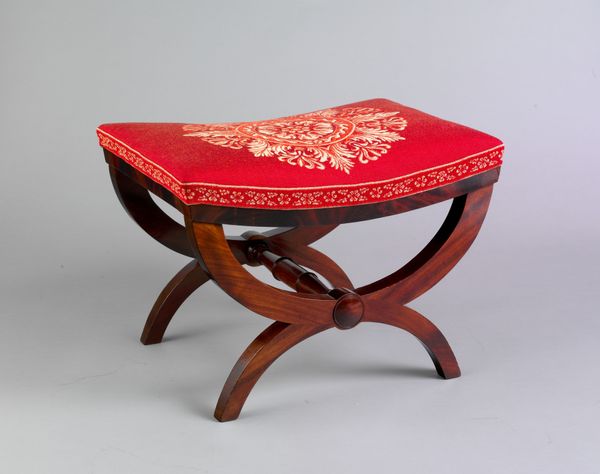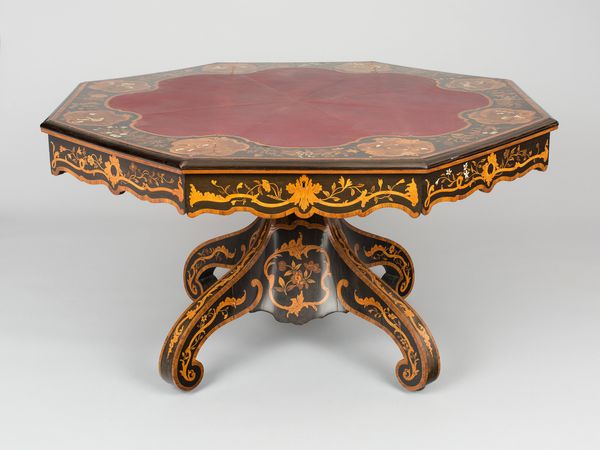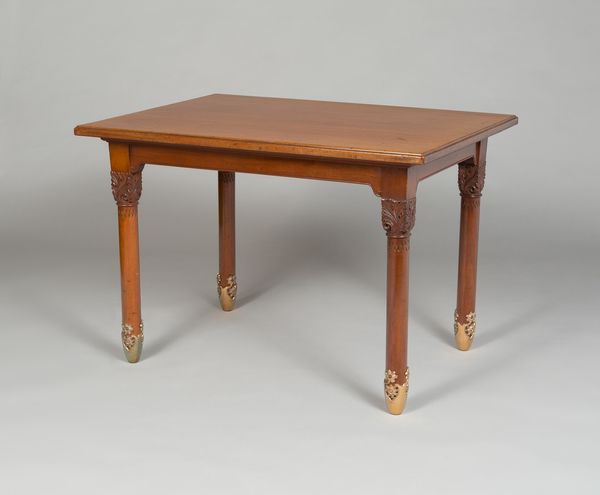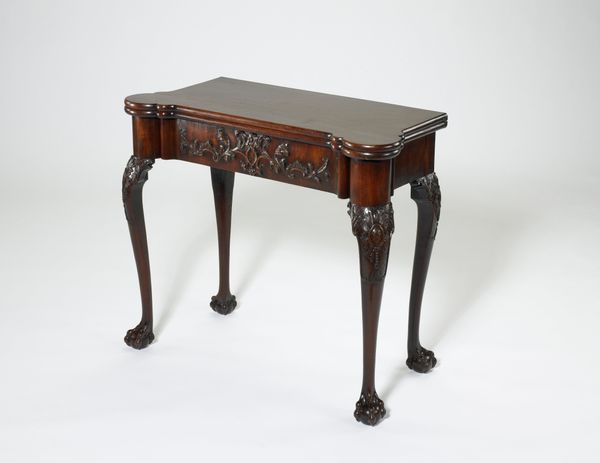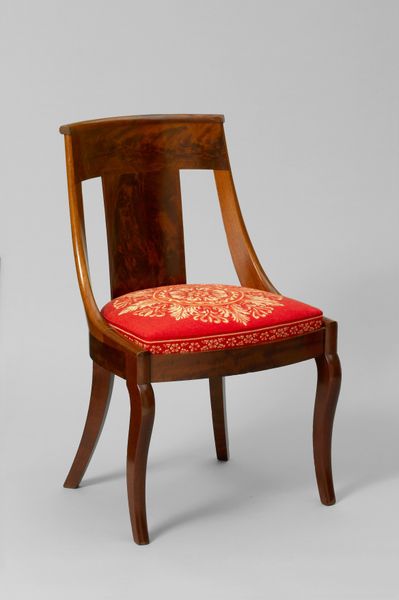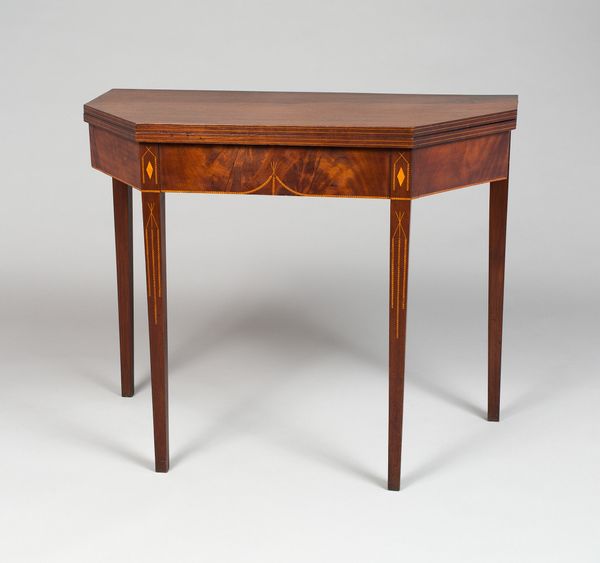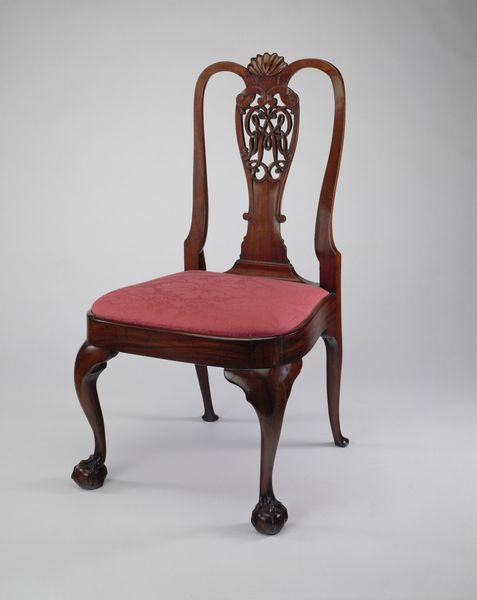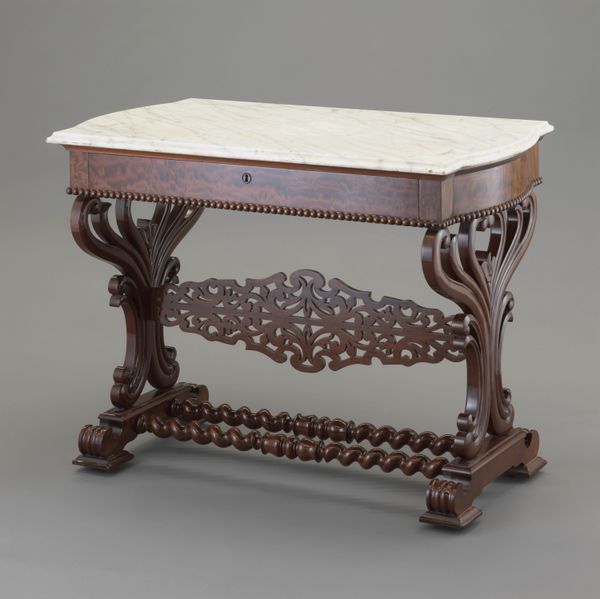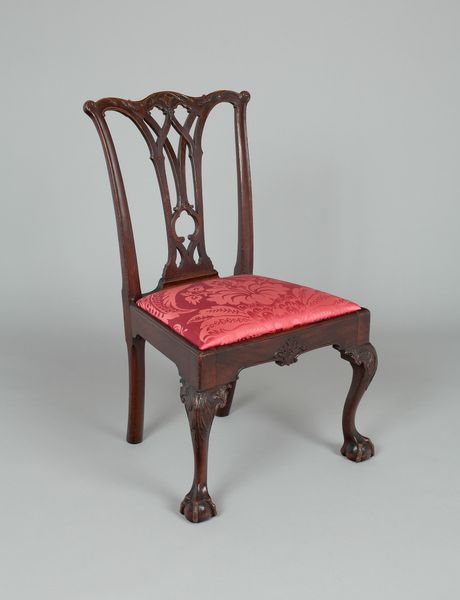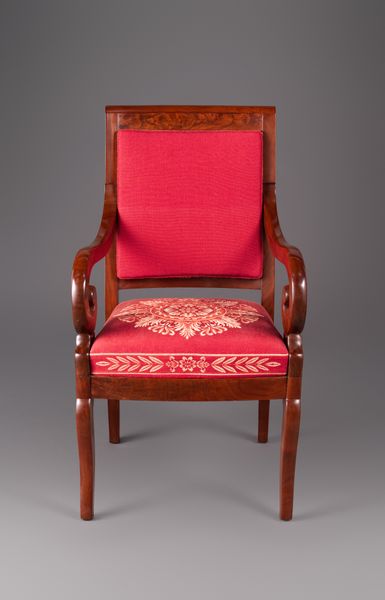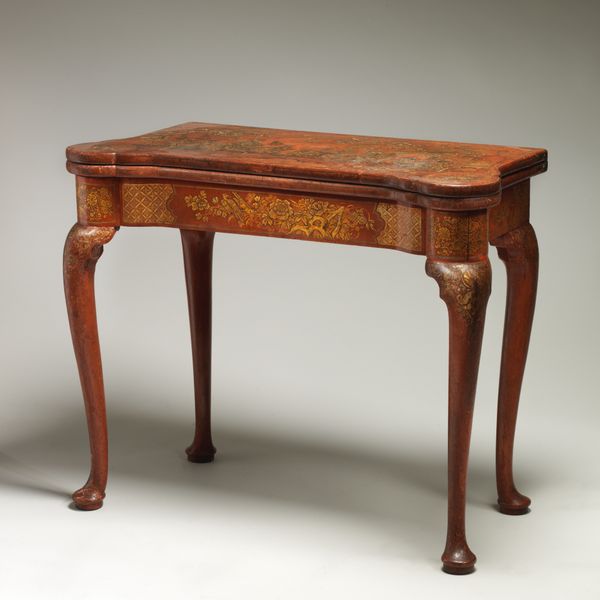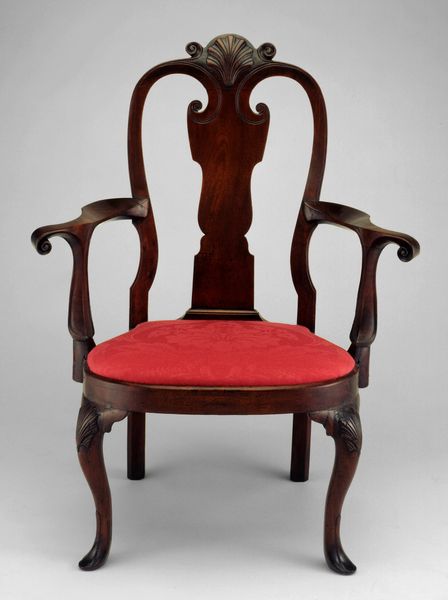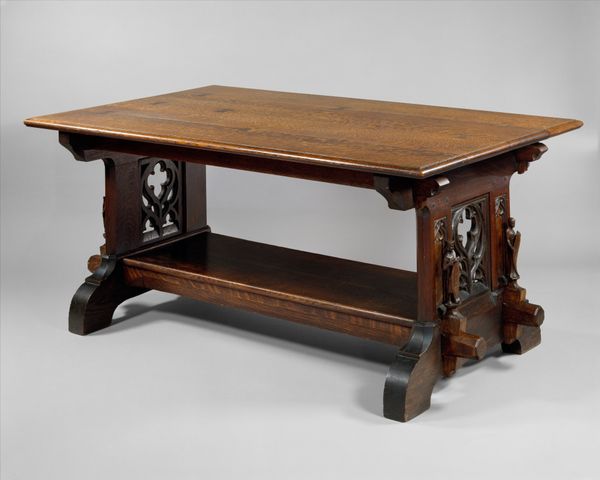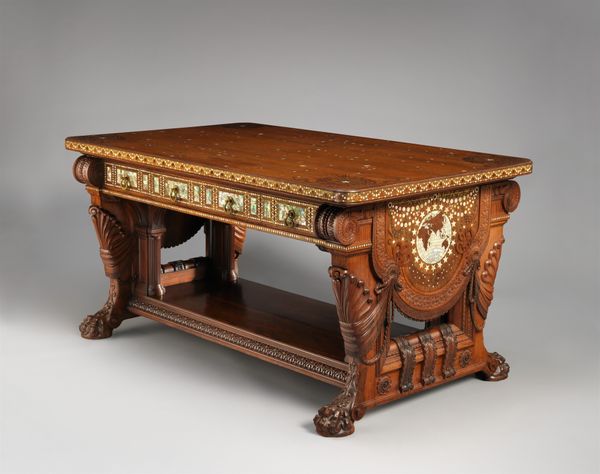
mixed-media, textile, wood
#
neoclacissism
#
mixed-media
#
pattern
#
furniture
#
textile
#
pattern design
#
wood
#
decorative-art
Dimensions: 16 1/4 x 44 3/4 x 14 in. (41.3 x 113.7 x 35.6 cm)
Copyright: Public Domain
Editor: This striking bench, called "Window Seat," dates from 1832 to 1842, created by Duncan Phyfe using mixed media: wood and textile. I’m immediately struck by the bold red upholstery and its contrasting gold pattern; it's unexpectedly vibrant for its age! How do you interpret this piece within its historical context? Curator: This bench speaks volumes about the social dynamics of the era. While seemingly just decorative art, pieces like this were inherently tied to the lives, particularly the gendered experiences, of the individuals inhabiting these spaces. What statement do you think the decorative opulence made at this time? Editor: I guess it signified wealth and status, almost like a visual performance of domestic tranquility. Were there further, perhaps, underlying considerations that may have also shaped the object? Curator: Precisely. Consider the restricted role of women during this period. Objects like this weren't merely functional; they were props in a carefully curated domestic performance. Neoclassical design often referenced Greek and Roman ideals. What aspects of the neoclassical movement are you seeing reflected here and in its sociopolitical context? Editor: The symmetry of the pattern? Maybe it's the way the strong form of the bench evokes a sense of order? I’m also wondering whether these materials could be related to colonization and global trade? Curator: Exactly. The availability and value of exotic wood and dyes depended directly on exploitative colonial practices. The visual harmony that it gives does also give us clues to the pursuit of rational order. This bench then isn't just a seat. It embodies a complex web of social norms, gendered expectations, and economic exploitation. Editor: That is so much to think about! Thank you for providing new frameworks for interpretation. Curator: It all points to a constant process of critical inquiry, understanding how objects like this reflected and influenced lived experiences in early 19th century America.
Comments
No comments
Be the first to comment and join the conversation on the ultimate creative platform.
